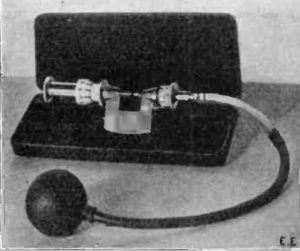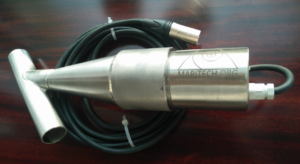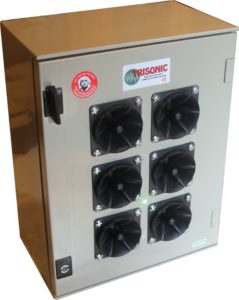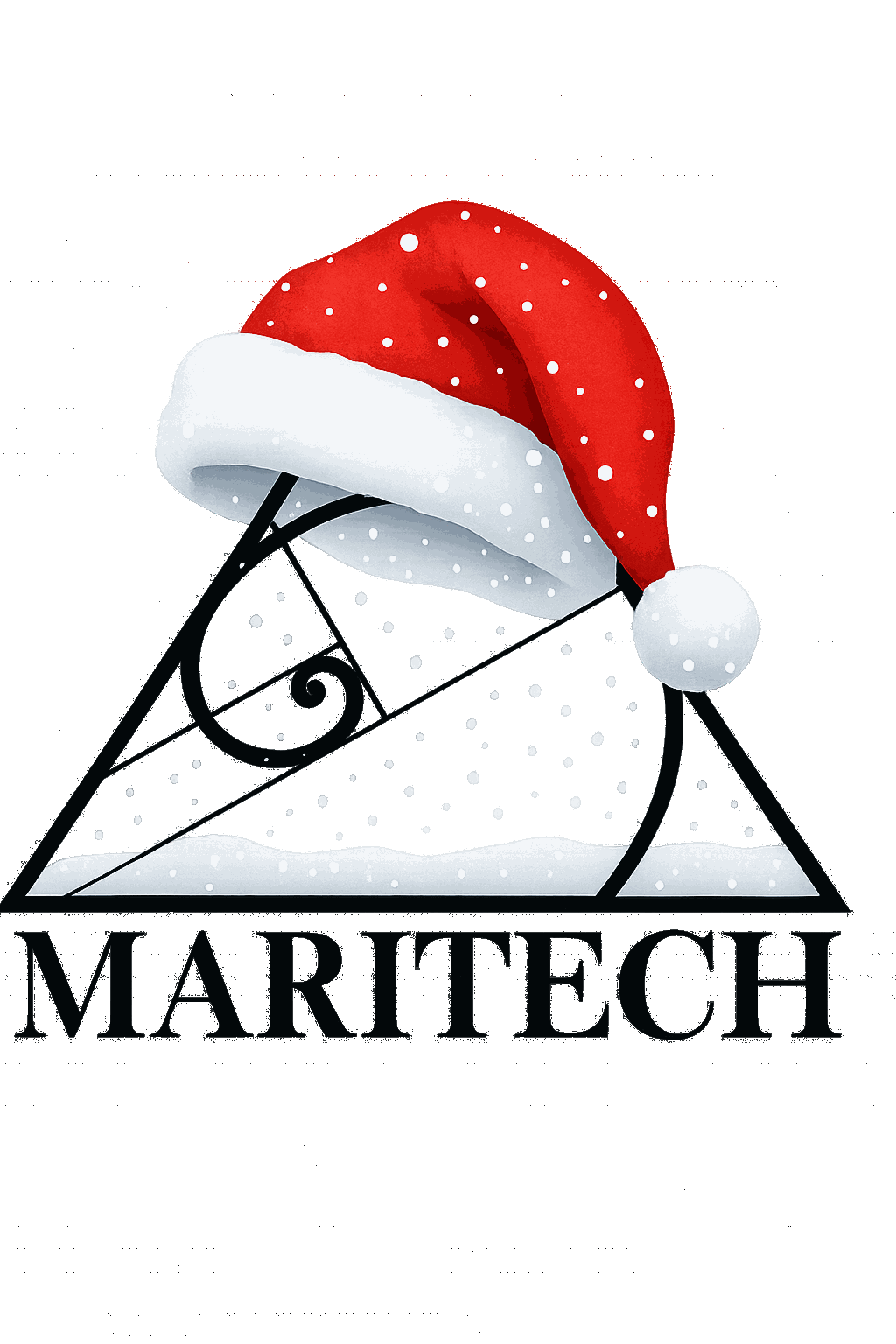Applications using ultrasound were first introduced by Paul Langevin in 1917. He used the principles of the piezoelectric effect that were discovered by Jacques and Pierre Curie in 1880.
The principle of treating water basins using low-power ultrasound technology was first patented by Mr. Thomas Hilaire in 1998 (BE). In 2000, he filed another patent to specifically treat biofilm contamination in draft beer installations.
Numerous other, mostly biofilm related, applications followed…
‘Any sufficiently advanced technology is indistinguishable from magic.’
Arthur C. Clarke

Galton whistle, one of the first devices to produce ultrasound (source Wikimedia)
In essence, the specific signal train of ultrasound signals removes the biofilm (=feeding ground for micro-organisms) and stops the binary fission (multiplication) of bacteria by causing vibration and stress in the liquid .
In addition, the resonant frequencies impair the vital membranes of algae cells (called vacuoles), whereby the algae bloom stops.
This was years before the IUPAC came with their official definition of ‘biofilm’ .

Trough continued research and feedback from clients, the devices were adjusted and improved over time.

After more than 26.000 units sold, the products from Thomas-Electronics have the most validated references and studies on the worldwide (low-power) ultrasound market.
Aside from biofilm removal applications we also have specific ultrasound products to keep certain non-domesticated mammals, pests, birds and vermin at a distance.
Maritech CV acts as partner for all products of Thomas-Electronics and is also involved in research and exploring new applications.

